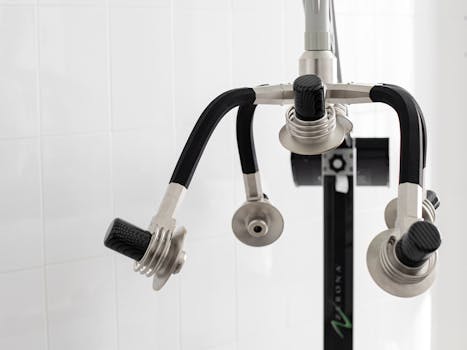
Unlocking Fat Loss: The Power of High-Intensity Interval Training
Takeaways:
- HIIT workouts are efficient and can lead to significant fat loss.
- This training method boosts metabolism and preserves muscle mass.
- Incorporating HIIT into your routine can be done in various ways, making it adaptable for all fitness levels.
High-Intensity Interval Training, commonly known as HIIT, is a workout strategy that alternates between intense bursts of activity and fixed periods of less-intense activity or complete rest. This training technique has gained immense popularity in recent years, particularly for those looking to lose fat efficiently. In this article, we will delve deeper into the science behind HIIT, its benefits for fat loss, and how you can incorporate it into your fitness routine.
Understanding High-Intensity Interval Training

Research shows that HIIT can lead to greater fat loss compared to other forms of exercise. A study published in the Journal of Obesity found that participants who engaged in HIIT lost more body fat than those who performed moderate-intensity continuous training. The reason behind this is twofold: the intense effort during HIIT workouts elevates your heart rate significantly, which increases calorie burn during and after the workout. This phenomenon is often referred to as the “afterburn effect” or excess post-exercise oxygen consumption (EPOC).
The Benefits of HIIT for Fat Loss

- Time Efficiency: HIIT workouts typically last between 20 to 30 minutes, making it easy to fit into a busy schedule.
- Increased Metabolic Rate: The high intensity of these workouts increases your resting metabolic rate, meaning you burn more calories even when you’re not exercising.
- Preserves Muscle Mass: Unlike steady-state cardio, HIIT helps to preserve muscle mass while promoting fat loss, which is crucial for maintaining a healthy metabolism.
- Variety and Fun: HIIT can be customized with different exercises, keeping your workouts exciting and preventing boredom.
Additionally, HIIT can be performed with little or no equipment, making it accessible for everyone, whether you prefer working out at home or in the gym. Exercises can include sprints, burpees, jump squats, and more, providing a full-body workout that challenges different muscle groups.
How to Incorporate HIIT into Your Routine
Getting started with HIIT is straightforward, but it’s essential to approach it safely, especially if you’re new to exercise. Here’s a simple guide to incorporating HIIT into your fitness routine:
- Start Slow: If you’re new to exercising, begin with moderate-intensity workouts and gradually increase the intensity.
- Choose Your Exercises: Select exercises that you enjoy and can perform safely. A mix of cardio and strength exercises can be very effective.
- Set Your Intervals: A common ratio is 30 seconds of high-intensity work followed by 30 seconds of rest, but you can adjust this based on your fitness level.
- Frequency: Aim for 2-3 HIIT sessions per week, allowing for recovery days in between.
- Stay Hydrated: Drink plenty of water before, during, and after your workouts to stay hydrated.
As you become more comfortable with HIIT, you can increase the intensity, duration, and complexity of your workouts. Consider joining a HIIT class or following online workouts for added motivation.
Conclusion








